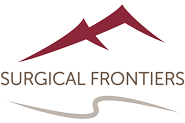
KATOR Patent Portfolio Increased to 7 Issued U.S. Patents
LOGAN, Utah, March 5, 2019 – KATOR, an early stage medical device company focused on advanced tissue-to-bone repair systems, announced today that the United States Patent and Trademark Office (“USPTO”) has recently granted the company additional patents related to its innovative suture anchor technology.
In the last 3 months, the USPTO has granted 4 additional US Patents that cover the KATOR technology. This expands the total patent portfolio to 7 issued US patents with additional patents pending. The 4 newly issued patents are: US Patent 10,143,462 entitled “Transosseous Suture Anchor Method,” US Patent 10,154,868 entitled “Transosseous Method,” US Patent 10,194,898 entitled “Suture Anchor,” and US Patent 10,226,243 entitled “Transosseous Suture Anchor;”
The KATOR technology features the KATORÒ Knotless Suture Anchor and the BoneStitchÔ Transosseous Suture Passer, and both products facilitate arthroscopic procedures. The KATORÒ Knotless Suture Anchor locks more strands of suture than any equivalent size knotless suture anchor on the market. Additionally, the KATORÒ Knotless Suture Anchor facilitates suture tension adjustment after the suture anchor is fully seated in the bone, allowing the surgeon to evaluate the final repair construct and make necessary adjustments prior to the knotless locking of the suture. The BoneStitchÔ Transosseous Suture Passer enables the fastest and most reliable technique on the market for simultaneously creating a bone tunnel and passing suture through the bone tunnel.
In a recent publication in a leading peer review medical journal, biomechanical testing demonstrated the superior performance of a knotless, transosseous repair using only 2 KATORÒ Knotless Suture Anchors compared to a traditional knotless, transosseous equivalent repair using 4 suture anchors.1
KATOR is a medical device company founded and operated by Surgical Frontiers.



Sorry, the comment form is closed at this time.